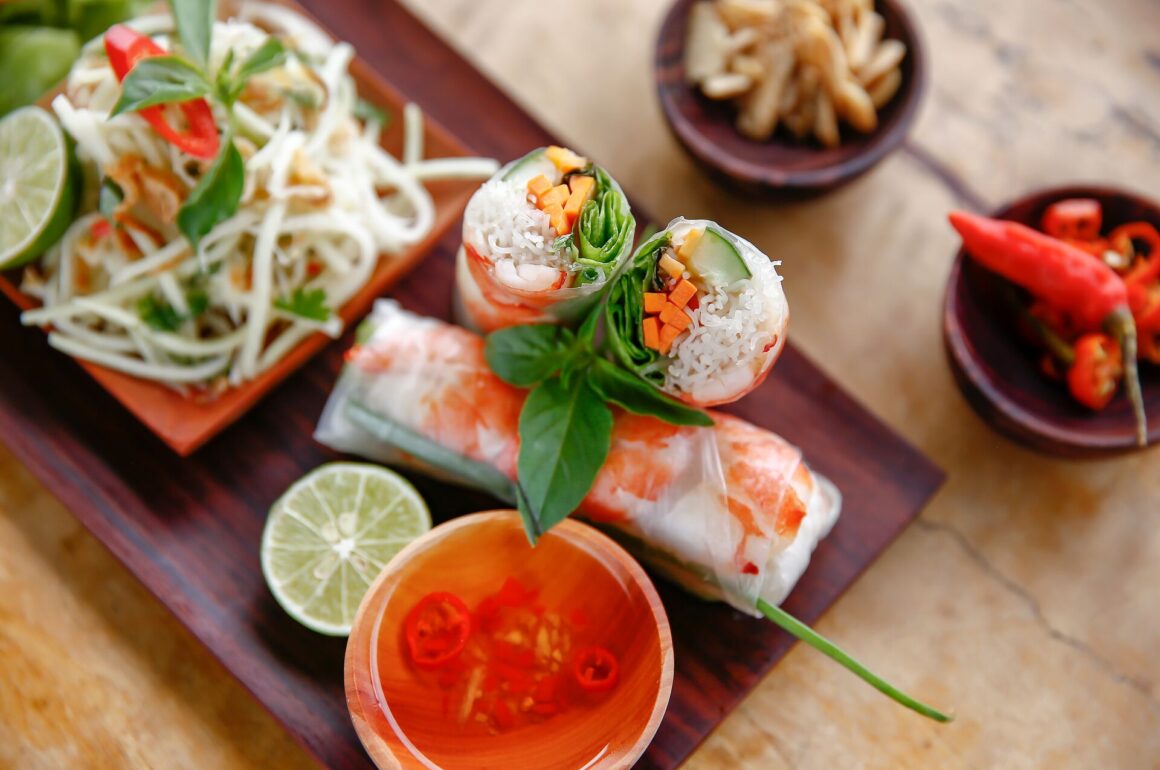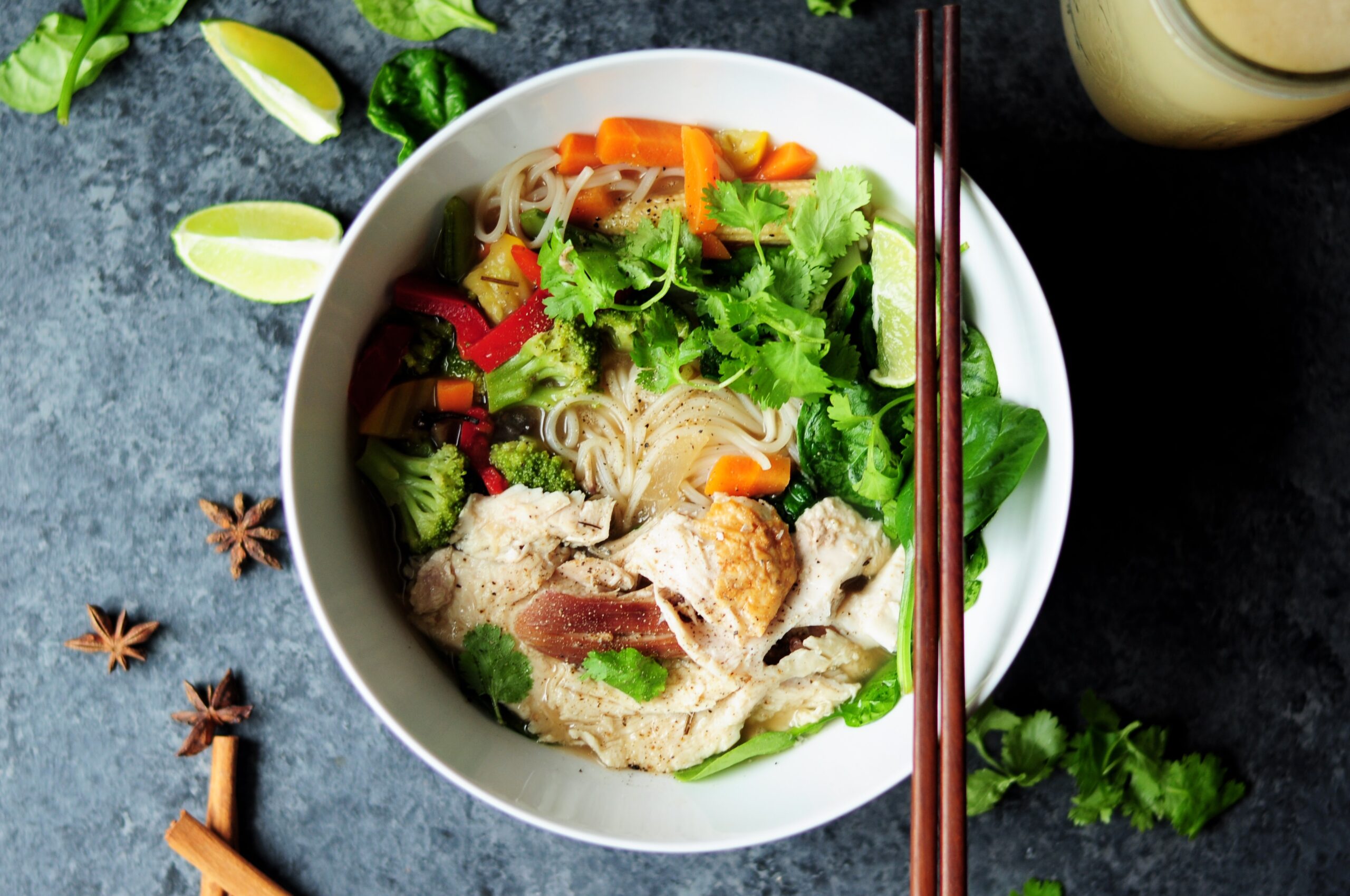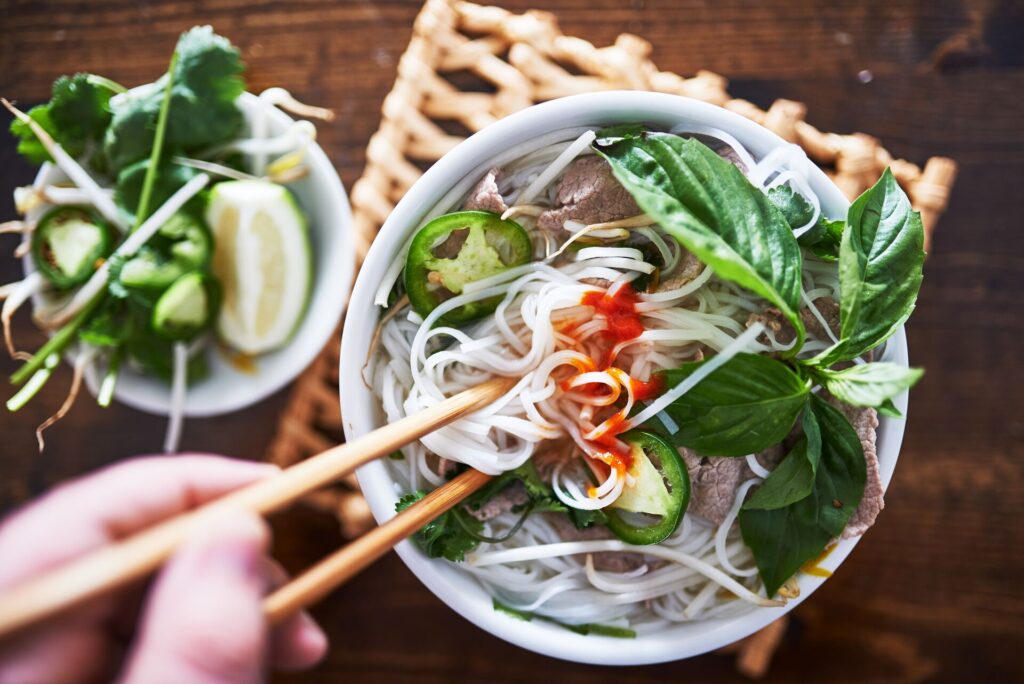
Fresh local ingredients bursting with flavor. Colourful dishes, exquisitely presented. The cuisine of Vietnam and Cambodia is a delight for both the palate and the eye.
While street food is an essential part of the culinary experience, both countries also have a glittering fine dining scene. And whether you’re sampling traditional dishes from a market vendor in Siem Reap or dining at one of Saigon’s spectacular rooftop restaurants, every meal in these two countries is an experience.
Discover this on: Cambodia & Vietnam in Style
Delicious, healthy and aesthetically pleasing

Although they’re distinctive from one another, the cuisines of Vietnam and Cambodia share common principles. Dishes focus on fresh, local ingredients, a delicate balance of flavors and thoughtful use of herbs and spices. Both are influenced by Indian, Chinese and, more recently, French cuisine.
For both cultures, food is not only meant to be delicious, but also visually appealing. Whether you’re in a fine-dining restaurant or at a street food stand, the way a dish is presented can be just as important as the flavors and ingredients used to make it.
Traditional Vietnamese dishes are often served on a platter, with a carefully chosen variety of herbs and vegetables. The colors, textures and shapes of the ingredients working together to create a visual treat. Cambodian dishes are often served in small bowls or plates, with each component arranged with precision and artistic flair.
Related article: From London to Tokyo: Where to sample the world’s best street food
Food presentation – Chinese and Buddhist traditions
The emphasis on presentation can be traced back to the influence of Chinese culinary traditions. In Chinese culture, food is not only meant to nourish the body, but also to delight the senses. Dishes are made with precision, attention to detail and an artistic flair that typifies their way of life.
The Buddhist concept of mindfulness is also a significant influencing factor. In Buddhist culture, the act of preparing and serving food is considered a form of meditation. Every plate is put together with care and attention, with the goal of creating a harmonious and balanced meal.
Fresh produce and a tropical climate

The fresh and flavorful ingredients used in the cuisine of Cambodia and Vietnam are a testament to the richness and diversity of the local produce and agricultural traditions of both countries.
Both have a tropical climate that allows for the cultivation of a wide variety of fruits and vegetables. This offers a ready supply of sublime ingredients and flavors including lemongrass, ginger, chilies and tropical fruits like mango and papaya.
Rice is also staple food in both countries, as are rice noodles, which are used in dishes such as pho (Vietnamese noodle soup) and kuy teav (Cambodian noodle soup). Due to their locations, seafood and freshwater fish also feature in many dishes.
You may also enjoy reading: The calmest cities in the world
Distinctive ingredients and styles
The cuisine of Vietnam is based on fresh ingredients, minimal cooking and lots of leafy greens and seafood. Typically, the Vietnamese use very limited amounts of animal protein and fat, and moderate use of sugar. Common ingredients in traditional dishes include rice, noodles, seafood, pork and herbs like lemongrass, basil and cilantro. Vietnam is also known for its use of nuoc mam, a fermented fish sauce that is used in many traditional dishes to add depth and flavor.
Taking a strong influence from neighbors Vietnam, Thailand and Laos, Cambodian dishes are often milder in terms of heat. Rice and fish are the staple ingredients, flavored with spices and herbs including kaffir lime leaves, lemongrass, turmeric and galangal. Prahok is a feature ingredient, this fermented fish paste that adds a distinctive umami flavor. And, if you are feeling adventurous, Cambodians are entomophagous, meaning they eat insects. This means you may find that crickets, ants and tarantulas are available on the menu.
Famous dishes

One of the most famous dishes in the cuisine of Vietnam is pho, a local staple and also an international culinary export. There is now where better to savor this flavorful noodle soup than in its home country. Typically made with beef or chicken broth, rice noodles, herbs and spices, you will see pho on every menu, from a fine dining restaurant to a street side cafe. Other popular Vietnamese dishes include banh mi, a baguette sandwich filled with a variety of meats and vegetables, and goi cuon, fresh spring rolls made with rice paper, vermicelli noodles, herbs, and a variety of meats or seafood.
Amok is the national dish of Cambodia. One of the royal dishes of the past, it dates back to the Khmer Empire during the 9th to 15th centuries. This coconut milk-based curry, with a mouse like consistency, is made with fish or chicken and usually served in a banana leaf cup or coconut shell. Lok lak, a stir-fry dish made with beef or pork, vegetables and a flavorful sauce is also both delicious and popular.
You may also be interested to read: These are 2023’s most remarkable luxury travel trends
Dine your way around Cambodia and Vietnam in Style
Gastronomy is at the heart of every Luxury Gold tour. And our Cambodia & Vietnam in Style tour offers a culinary journey that will set your taste buds alight day after day. Paired with magnificent hotels, unique experiences and an exclusively curated itinerary.
Dine at one of Saigon’s finest rooftop restaurants in Saigon, with the lights of the city twinkling in the background. And savor a memorable meal and private concert at the home of celebrated painter and singer, Camille Huyen. Join a local foodie in the Old Quarter to explore the street food culture of Hanoi. Feast on pho and crab spring rolls. Participate in a hands-on cooking class alongside a local chef. Learn from villagers how they cultivate and harvest vegetables according to local customs.
If you are feeling inspired to treat yourself to the journey of a lifetime, take a look at Cambodia & Vietnam in Style or our full collection of luxury Vietnam vacations.











Leave a Comment